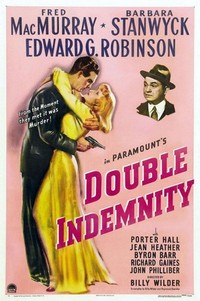
Double Indemnity (1944)
Bloedgeld

Raiting: ![]() 8,2 /10
8,2 /10
Genre: Filmnoir
Director: Billy Wilder
Stars: Fred MacMurray, Barbara Stanwyck and Edward G. Robinson
Country: United States
Release date: 6 July 1944
Length: 107 minutes


Raiting: ![]() 8,2 /10
8,2 /10
Genre: Filmnoir
Director: Billy Wilder
Stars: Fred MacMurray, Barbara Stanwyck and Edward G. Robinson
Country: United States
Release date: 6 July 1944
Length: 107 minutes